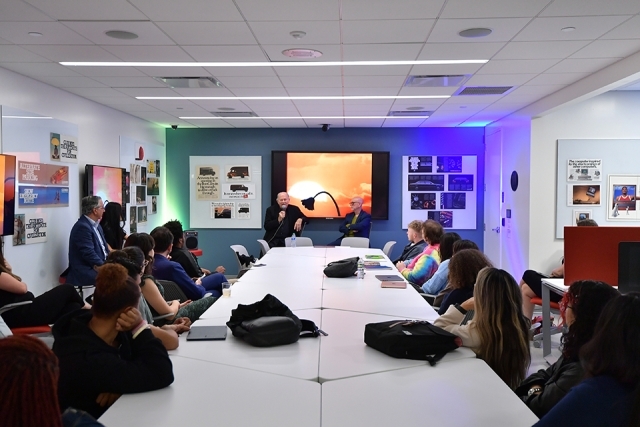

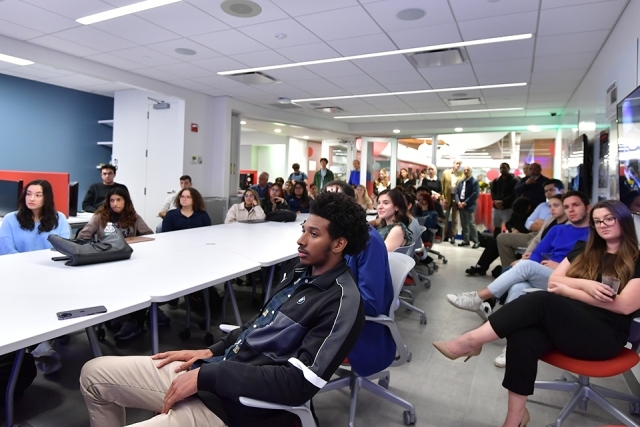
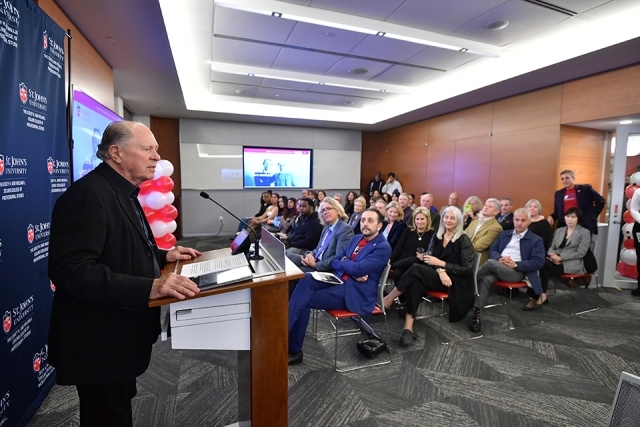
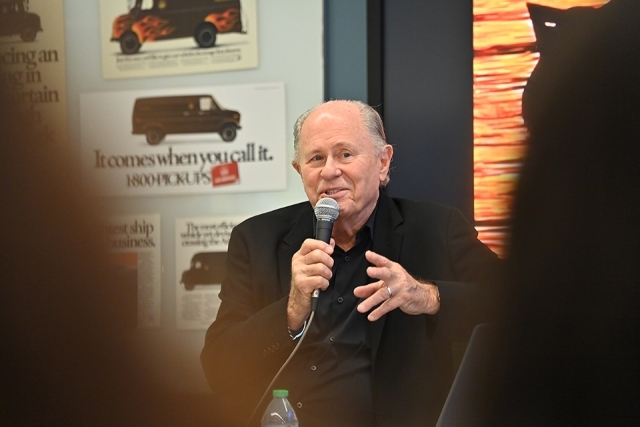
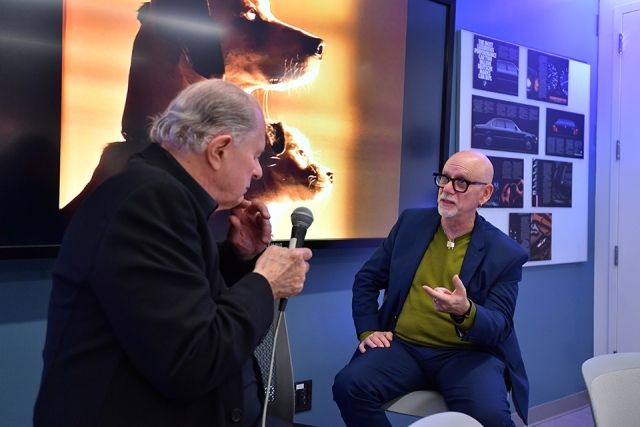
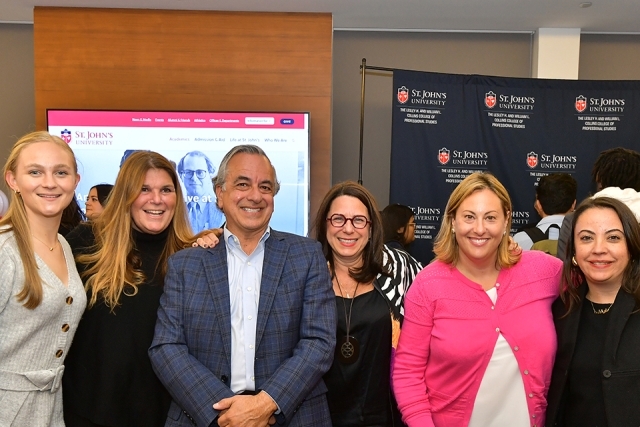
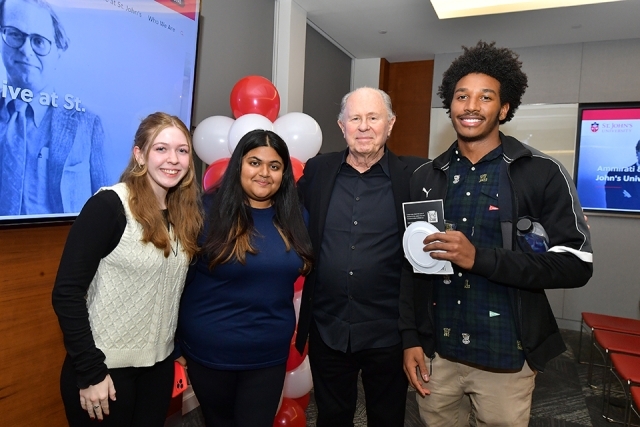
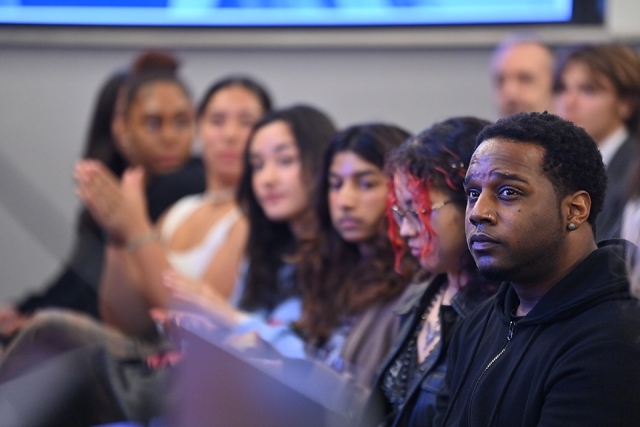









St. John’s University celebrated a pair of advertising industry legends whose contribution to The Lesley H. and William L. Collins College of Professional Studies will inspire students for generations.
Ralph Ammirati and Martin Puris, the creative forces behind some of advertising’s most enduring campaigns, have donated their professional catalog to the University. They hope future advertising influencers will, in the words of Mr. Puris, “return advertising to the Golden Age” of big thinking.
The pair were celebrated at a launch party attended by students, faculty, administrators, staff, and alumni on October 19 at the Design Factory in St. Augustine Hall. The Ammirati & Puris archive features some of the tandem’s finest work, dating back to the start of their partnership in 1974.
Mr. Ammirati and Mr. Puris were in talks with several New York City-area universities over two years before deciding on St. John’s. The archive offers St. John’s students the opportunity to study work from true industry pioneers.
“We didn’t want our catalog to end up in someone’s musty basement,” Mr. Puris explained. “There are great people at St. John’s—especially the students, who are serious and motivated. We hope this will continue to be an active learning experience for them.”
With Mr. Ammirati as art director and Mr. Puris as copywriter, Ammirati & Puris produced such legendary campaigns as Club Med’s “Antidote for Civilization” (1977) and United Parcel Service’s “Tightest Ship in the Shipping Business” (1985). Its signature campaign—BMW’s “Ultimate Driving Machine”—is celebrating its 50th anniversary in 2024.
Over the years, other Ammirati & Puris clients have included the insurance giant Aetna, Four Seasons Hotels and Resorts, the Irish glassware maker Waterford Crystal, former technology company Compaq, and the lifestyle brand Ralph Lauren. Through nearly five decades, the firm has stayed true to the vision of its founding partners—namely, that in advertising big ideas are better.
“When the advertising business was good, it was very good,” Mr. Puris said. “Advertising agencies were the master creators of big ideas—insightful, meaningful, memorable, and compelling campaigns that helped to build some of America’s great brands. Today, big ideas have been devalued to the point where they have almost lost their meaning.”
Students in St. John’s Advertising Communications undergraduate and Integrated Advertising Communications graduate programs will have the benefit of Mr. Ammirati and Mr. Puris’ accumulated wisdom. The archive will remain part of the College of Professional Studies in perpetuity, accessible to all those inside the University.
“It’s a thrill to learn from people who are among the best in the industry,” said Victoria Kelly, a junior from East Rockaway, NY, who is pursuing a Bachelor of Science degree in Advertising Communications. “It’s a good feeling to think that our College is getting this material from people who have succeeded. Each time you look at this catalog, you might see something you have not noticed before.”
Mr. Puris shared trade secrets and inside stories with the St. John’s audience, which included Luca Iandoli, Ph.D., Dean, Collins College of Professional Studies, and Professor, Division of Computer Science, Mathematics, and Science, and Simon G. Møller, Ph.D., Provost and Vice President for Academic Affairs, University Distinguished Professor, and Provost Endowed Chair.
Dr. Moller said the Ammirati & Puris archive is an ideal use of the recently redesigned Design Factory, a product creation and learning center that draws upon the talents of students, faculty, and industry leaders.
“In these days when we have artificial intelligence and other ways to short-cut creative thinking, we at St. John’s are getting together within communities and discussing new ideas,” Dr. Moller said. “The Design Factory is a clear example of what we do at St. John’s.”
In a lesson to St. John’s students, Mr. Puris said that each of his firm’s campaigns had its own story. Club Med, a stripped-down, European-style vacation experience, seemed to lack appeal to Americans who were accustomed to lavish resort amenities while away.
The campaign seemed doomed, he recalled, until Mr. Puris saved it with an 11th-hour inspiration. The “Antidote for Civilization” featured Americans perfectly comfortable without watches, alarm clocks, and newspapers in the company of like-minded, and relaxed, vacationers.
“The challenge was how to tell Americans Club Med is a good thing,” Mr. Puris explained. “Americans are used to distractions—telephones, newspapers—every day. Club Med had none of that and nobody missed any of it. It was the ‘Antidote for Civilization.’”
Likewise, BMW was not always the luxury brand it is today. In fact, in 1974 it was among the least attractive and most expensive options in the automotive marketplace.
“We had to redefine the luxury sedan,” Mr. Puris recalled. “BMW was ashamed of the car. We spent all our time with the engineers and we knew they were geniuses. The first ad we presented in our pitch was ‘The Ultimate Driving Machine.’ We got a standing ovation.”
BMW fan Nehemiah Clark, who will earn his undergraduate degree in May as part of a five-year, dual-degree program in Communication Arts and Government and Politics, said the archive represents an opportunity to learn from a pair of industry icons whose willingness to gamble on big thinking defines their legacy.
“They are giants in the advertising industry,” said Nehemiah, who was sporting a BMW jacket. “I like to think I am a creative person, but this is a chance to learn from true creative geniuses.”
Related News
Alumna Celebrates Book Launch After Career Change
After developing a passion for helping the younger generation, Ashley Wilson ’14M.S.Ed. pivoted from a career in the music industry to work as an educator. She is also making her mark through her new...
Dean Jerrold Ross Conference Room Unveiled
On Tuesday, December 10, the newly renovated conference room on the fifth floor of Sullivan Hall was dedicated in honor of Jerrold Ross, Ph.D., former Dean of The School of Education . The renovation...
Institute for Catholic Schools Provides Educational Resources to Local Catholic School
The Institute for Catholic Schools (ICS) in The School of Education at St. John’s University recently donated approximately $2,800 worth of academic and sensory learning tools to Father Vincent...
